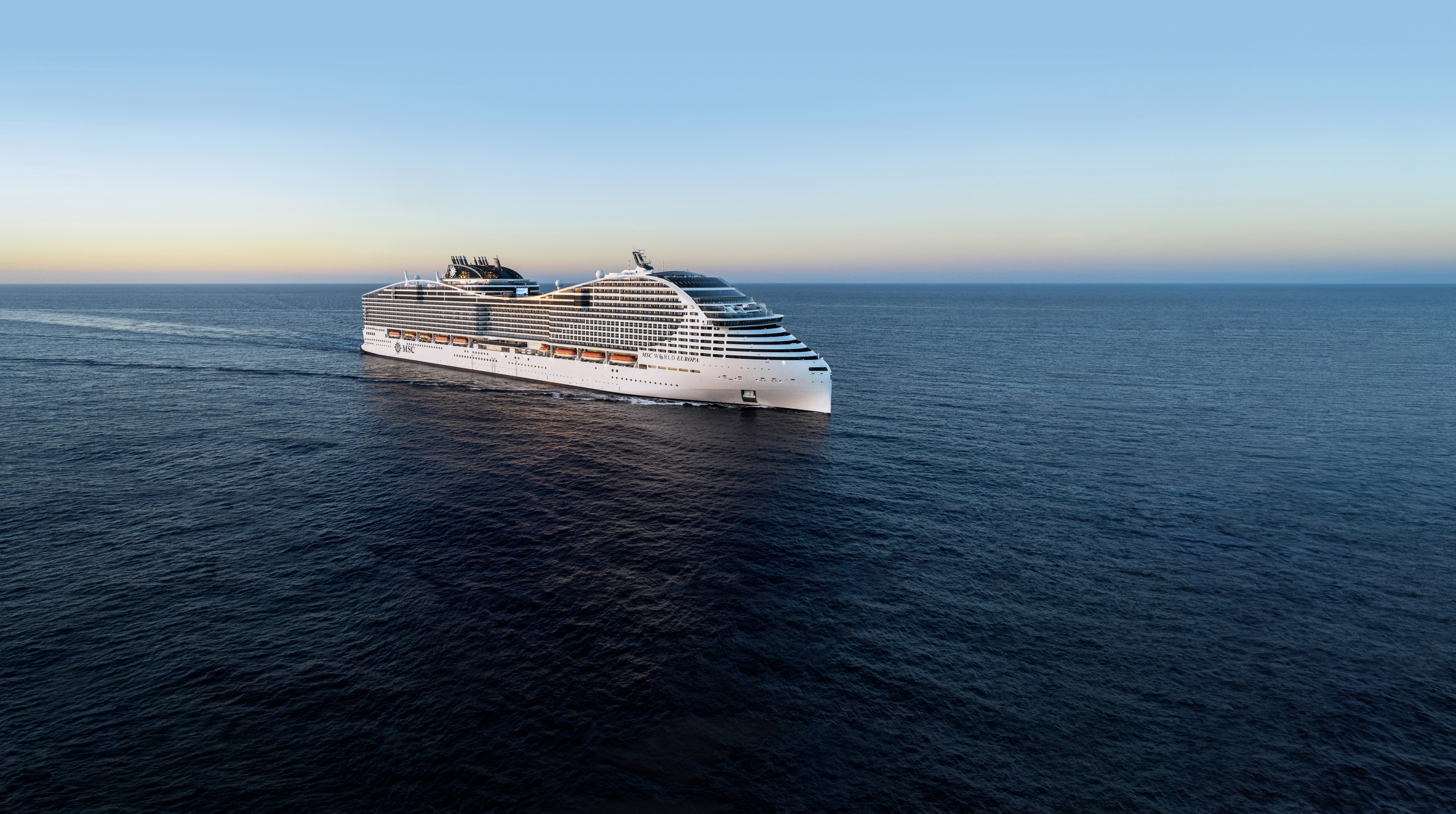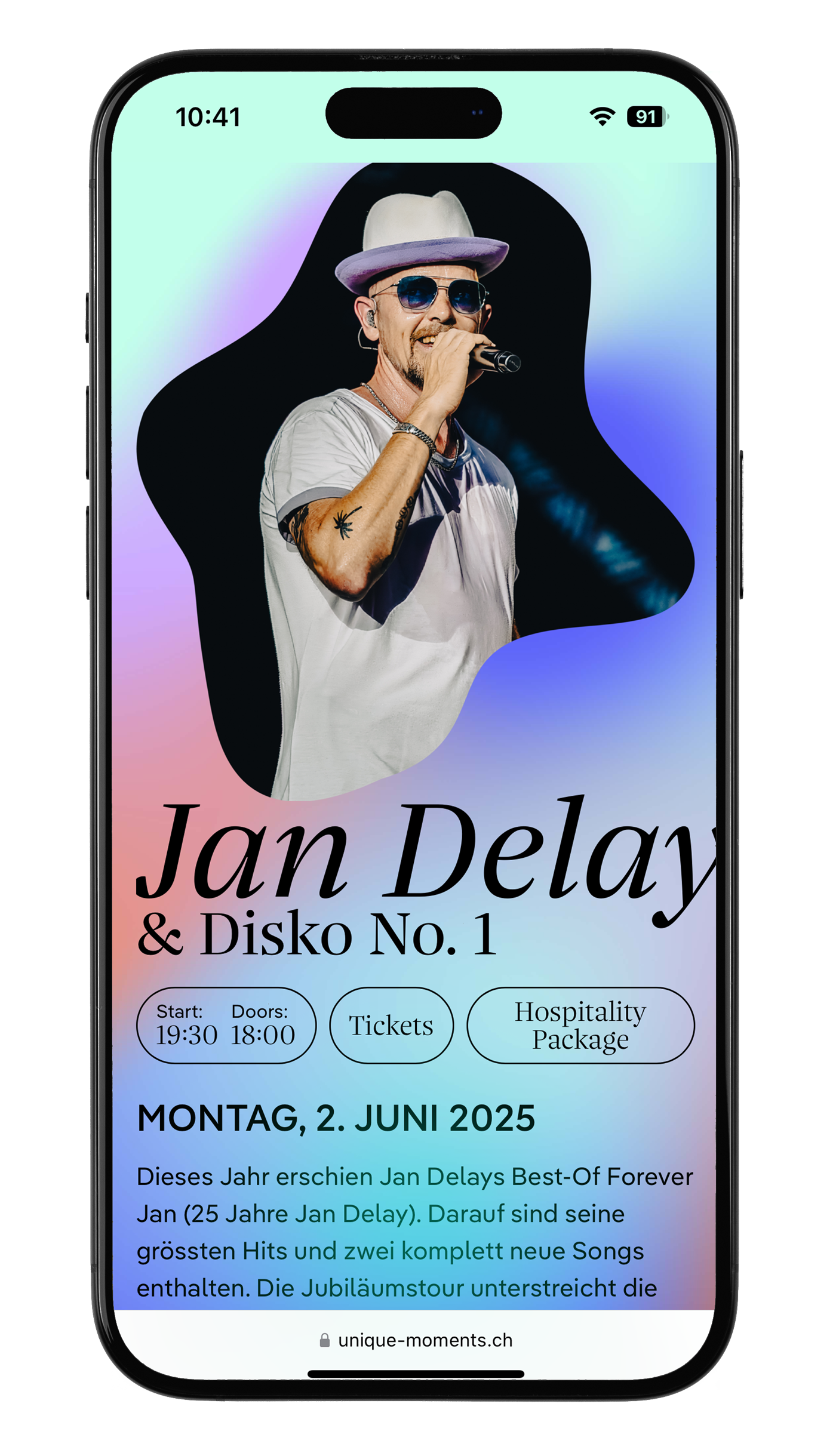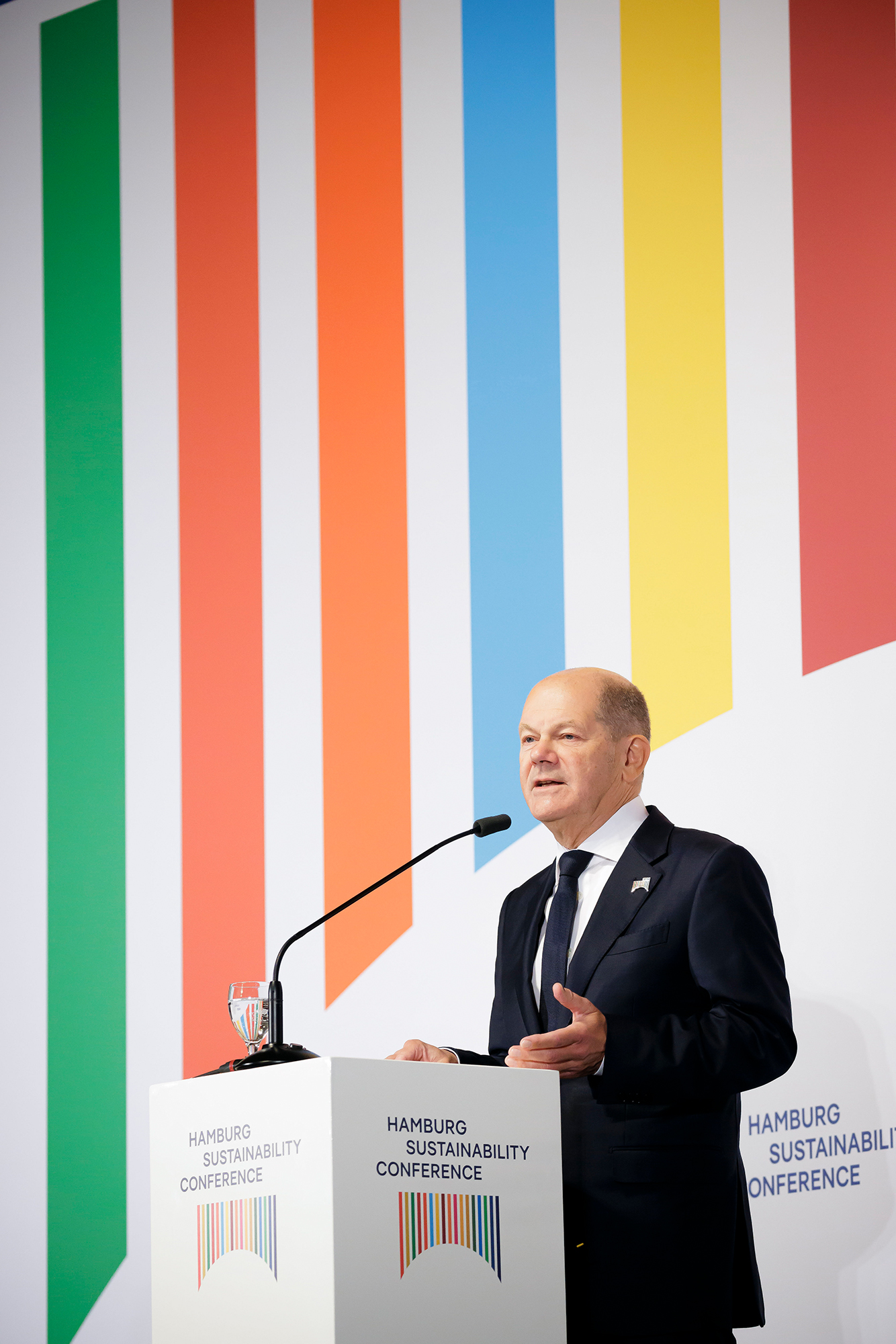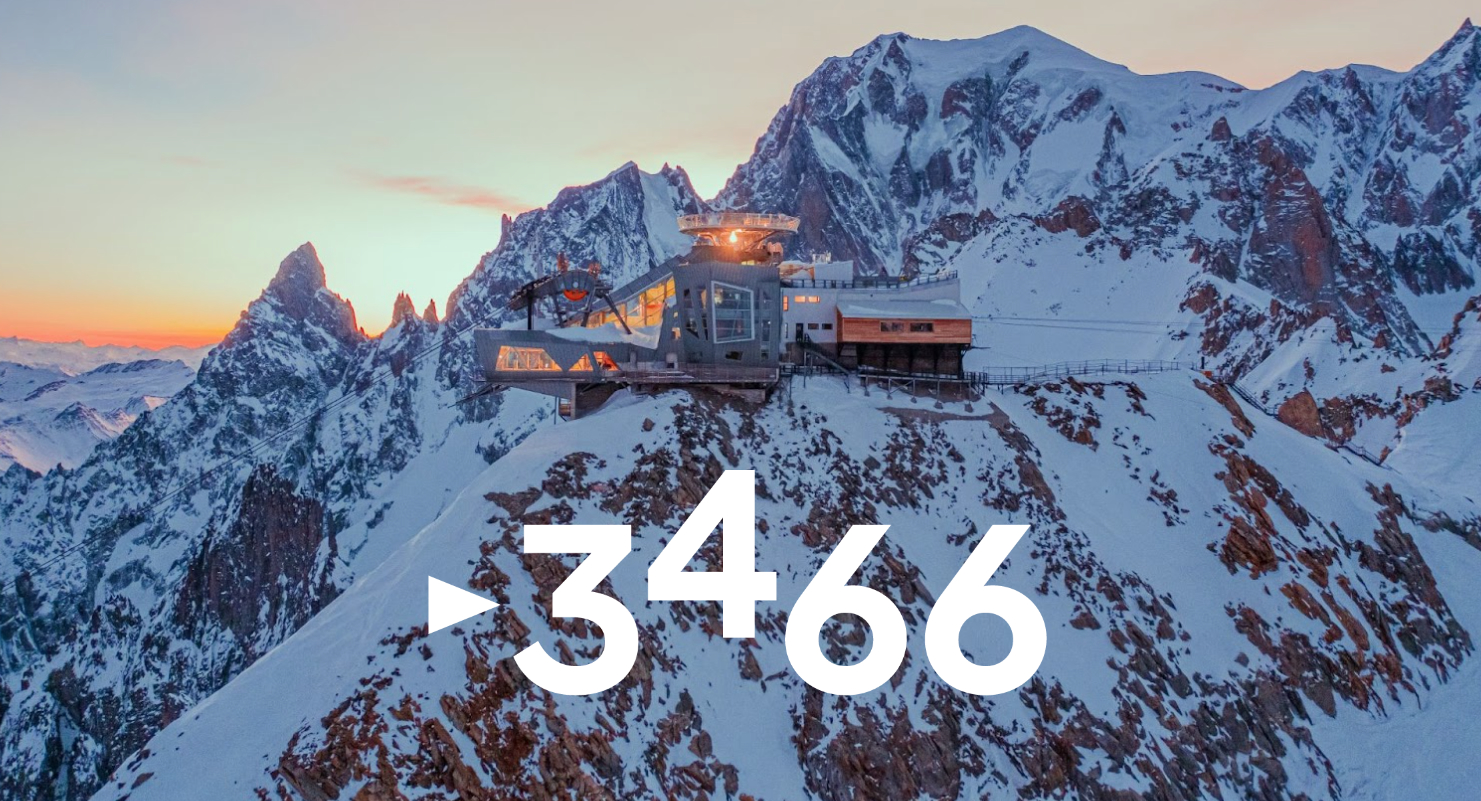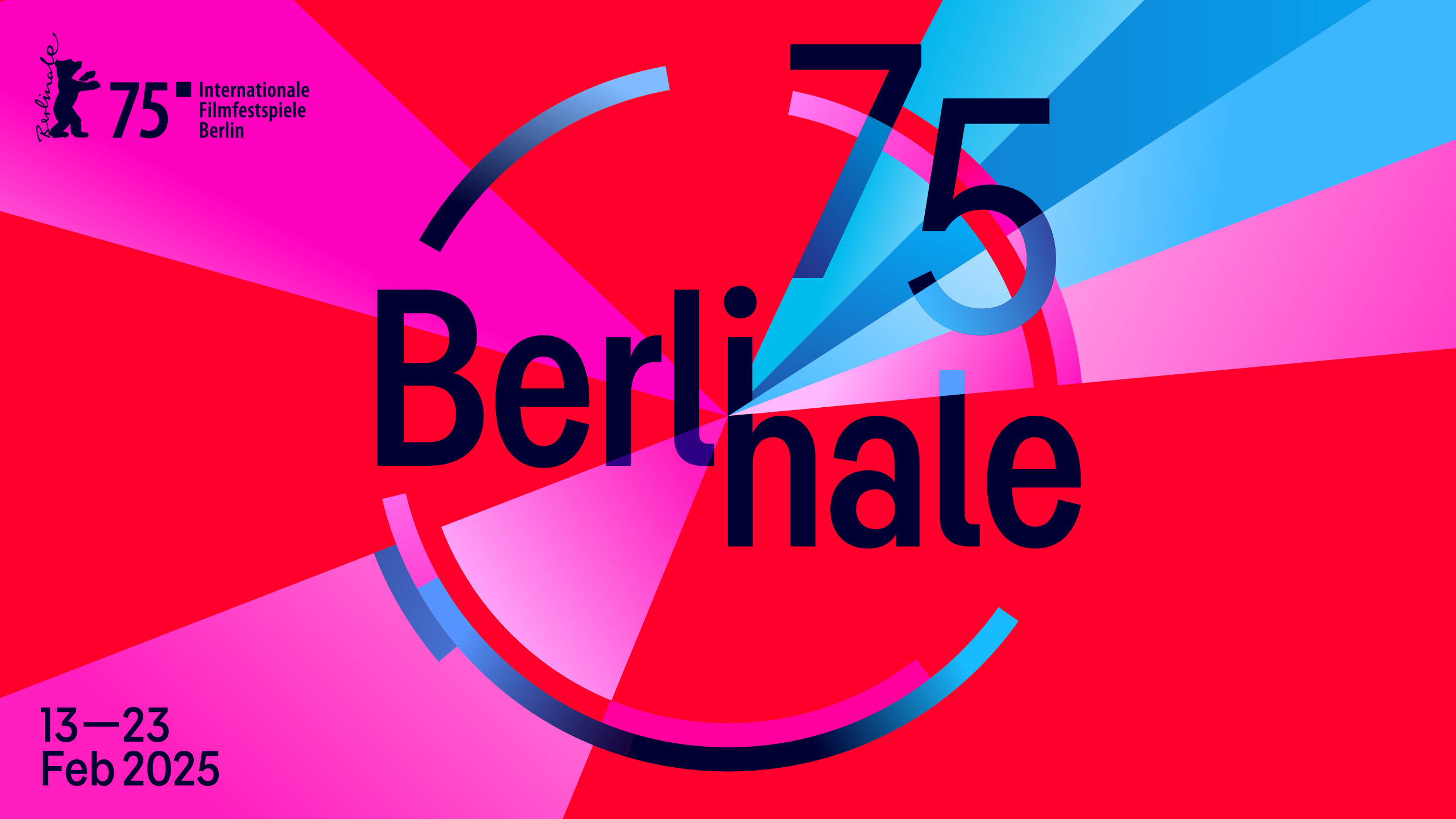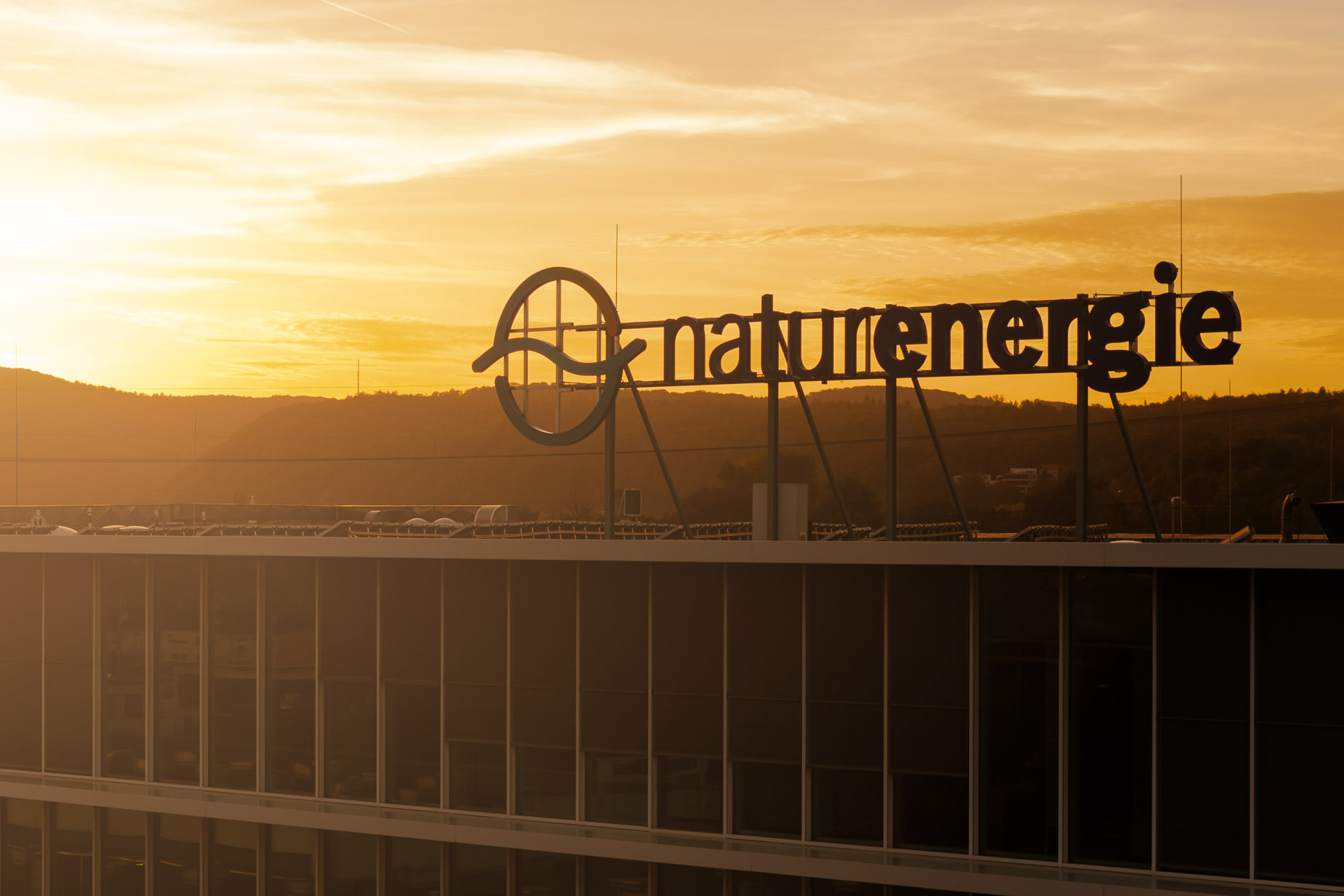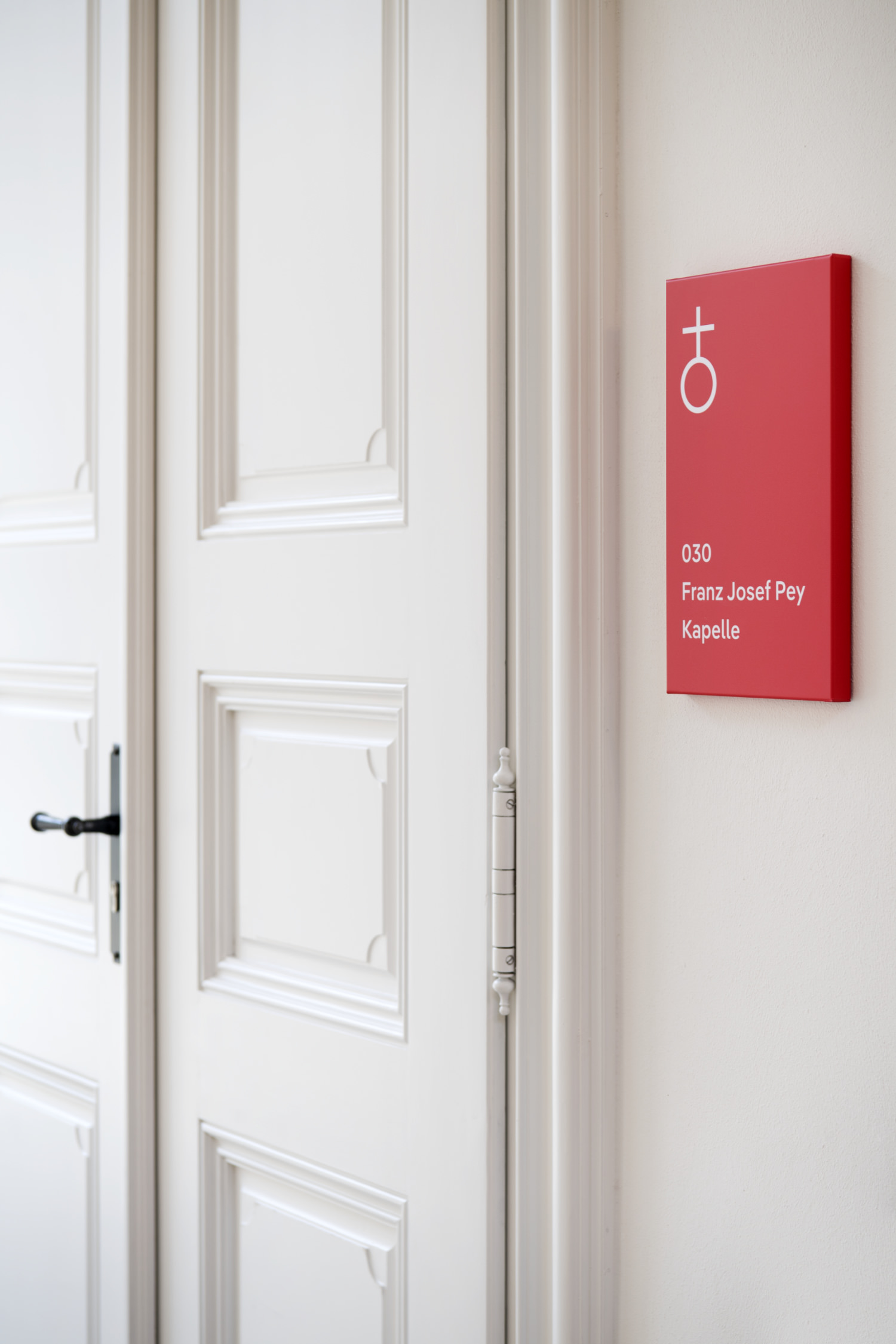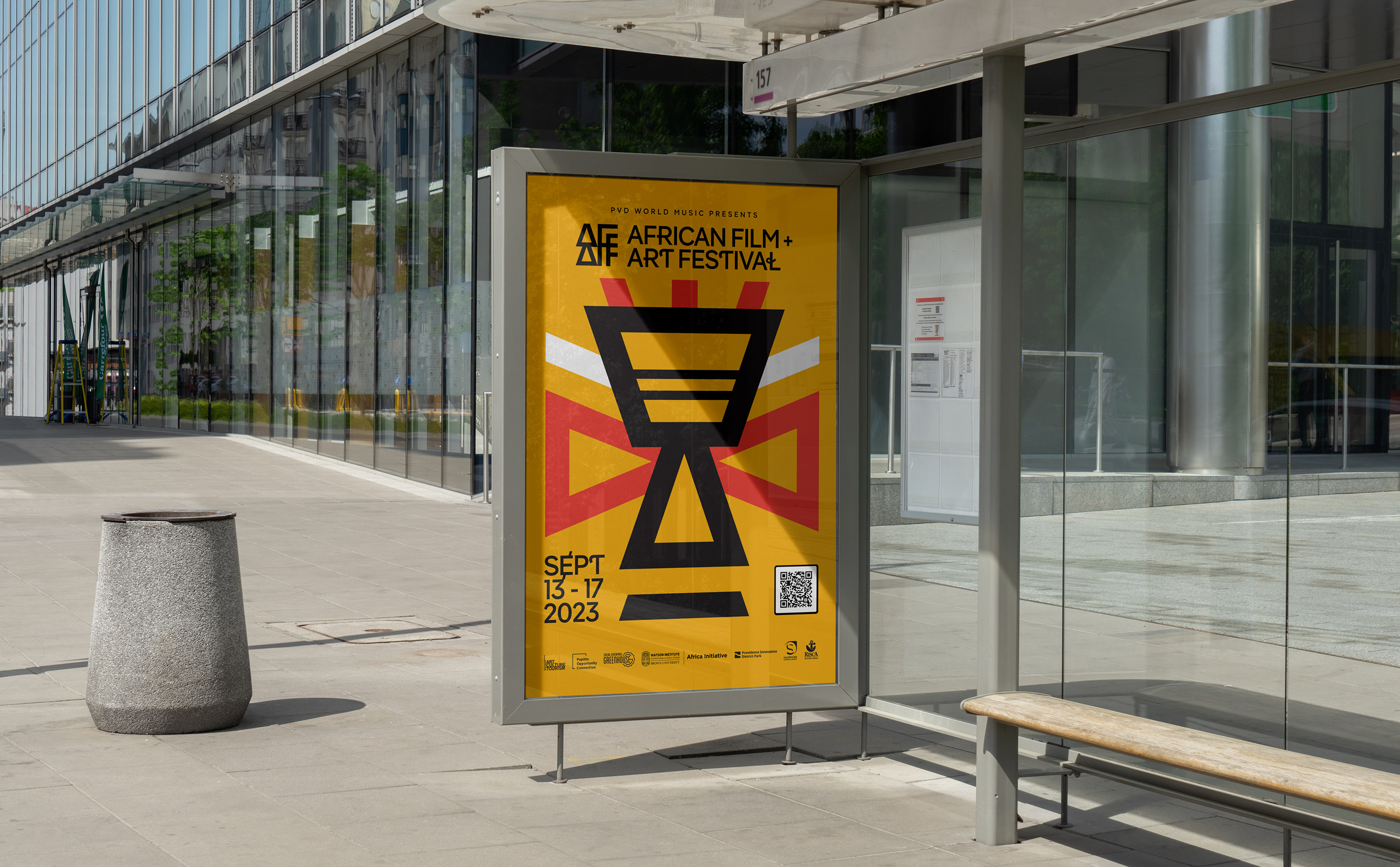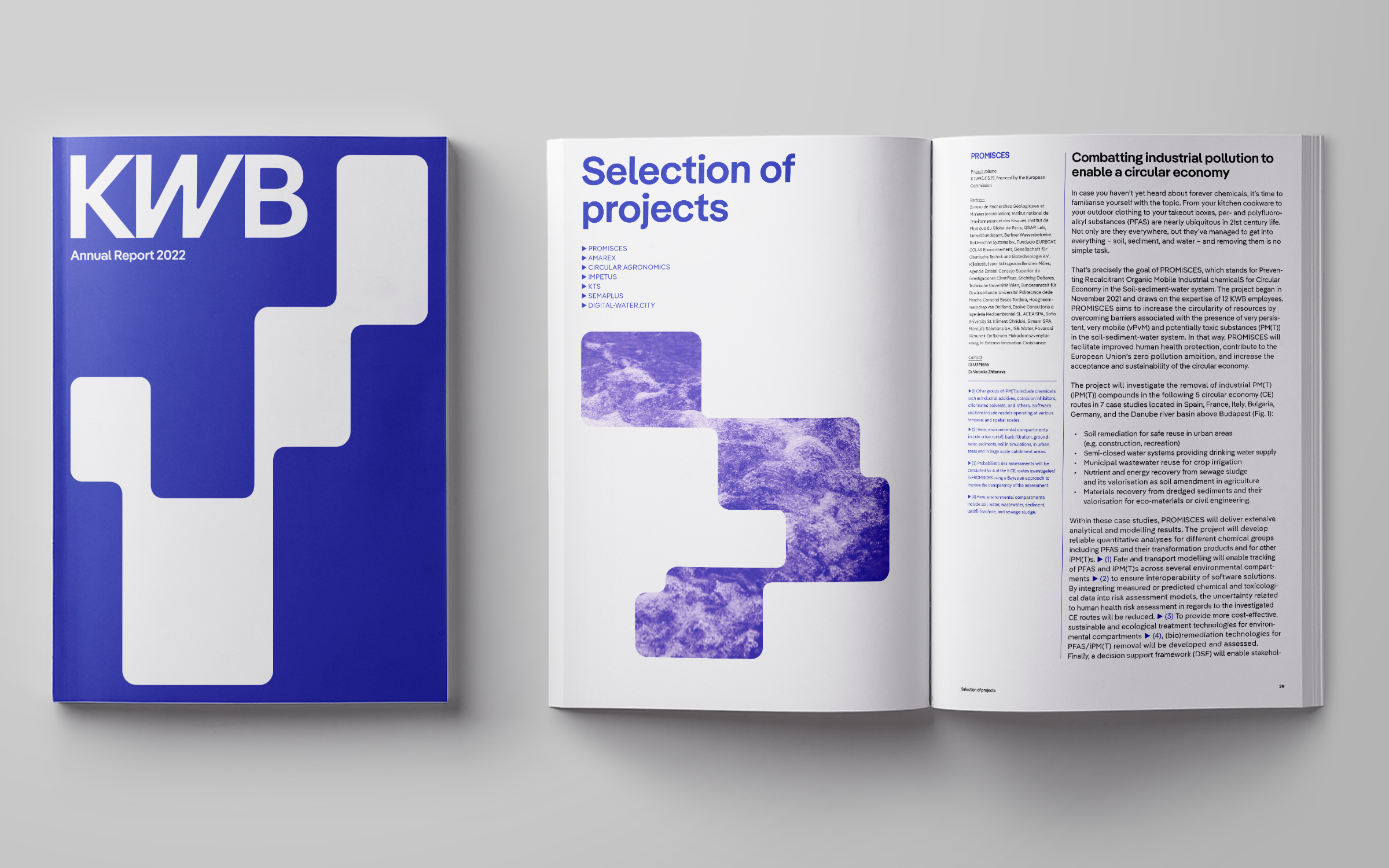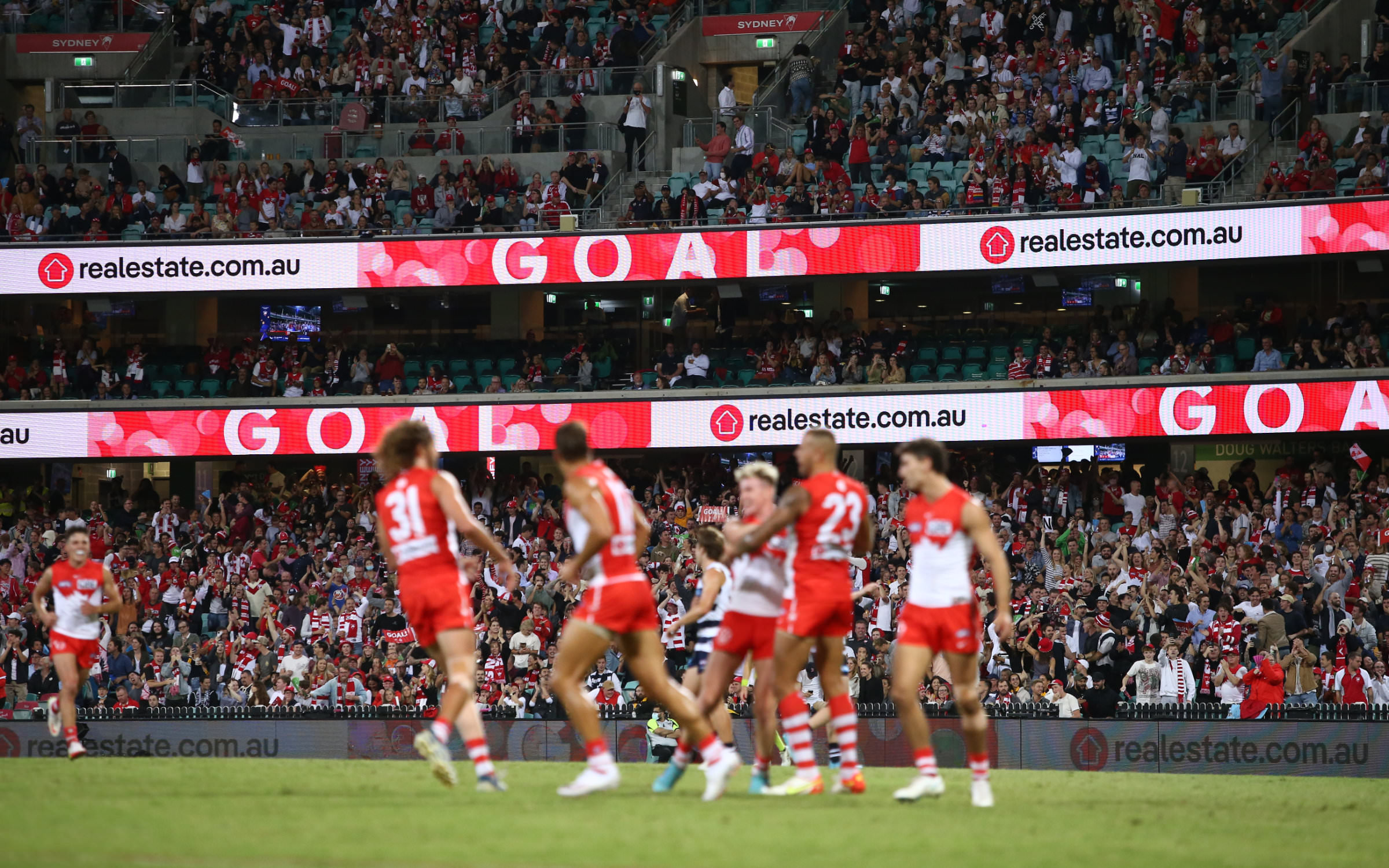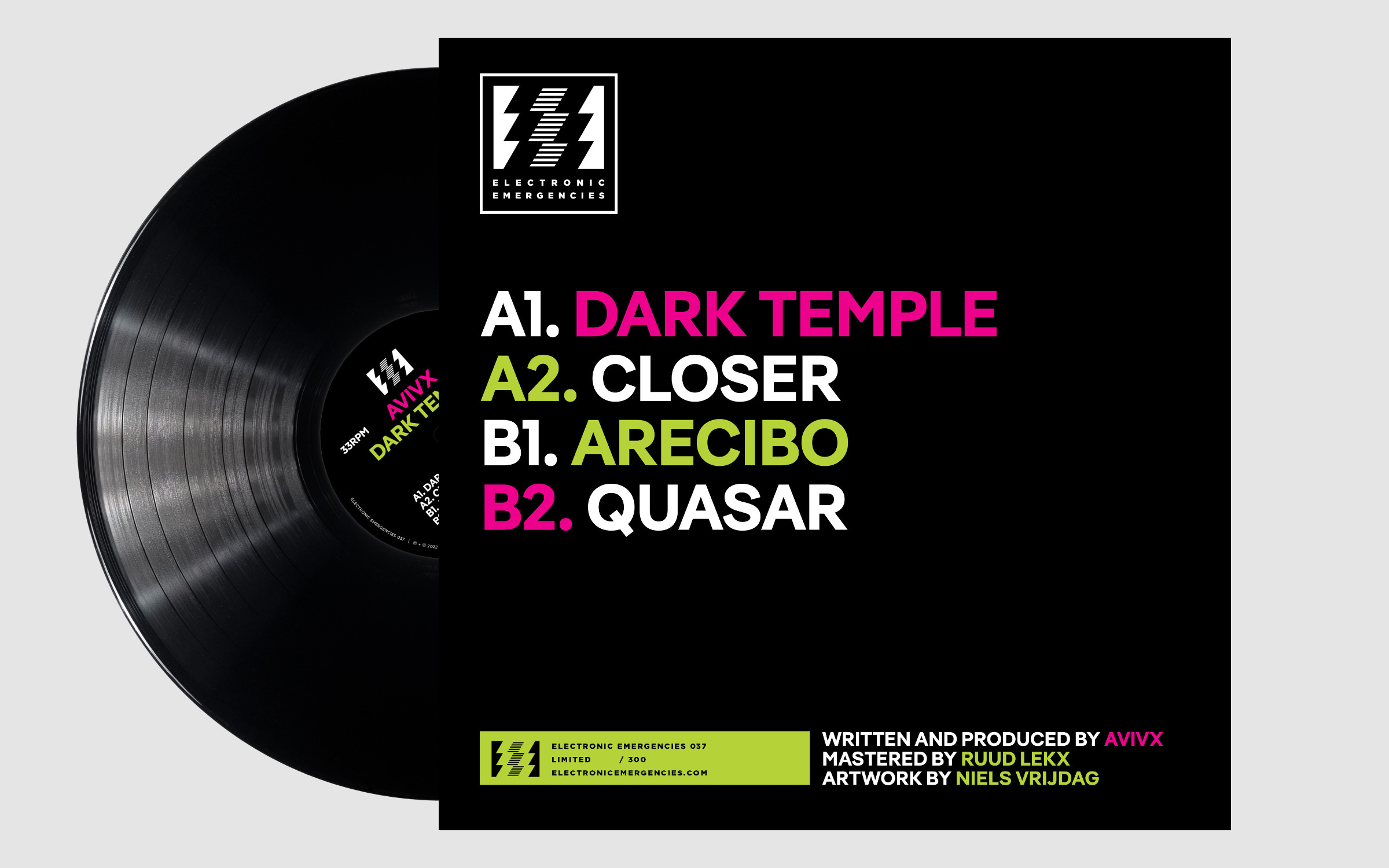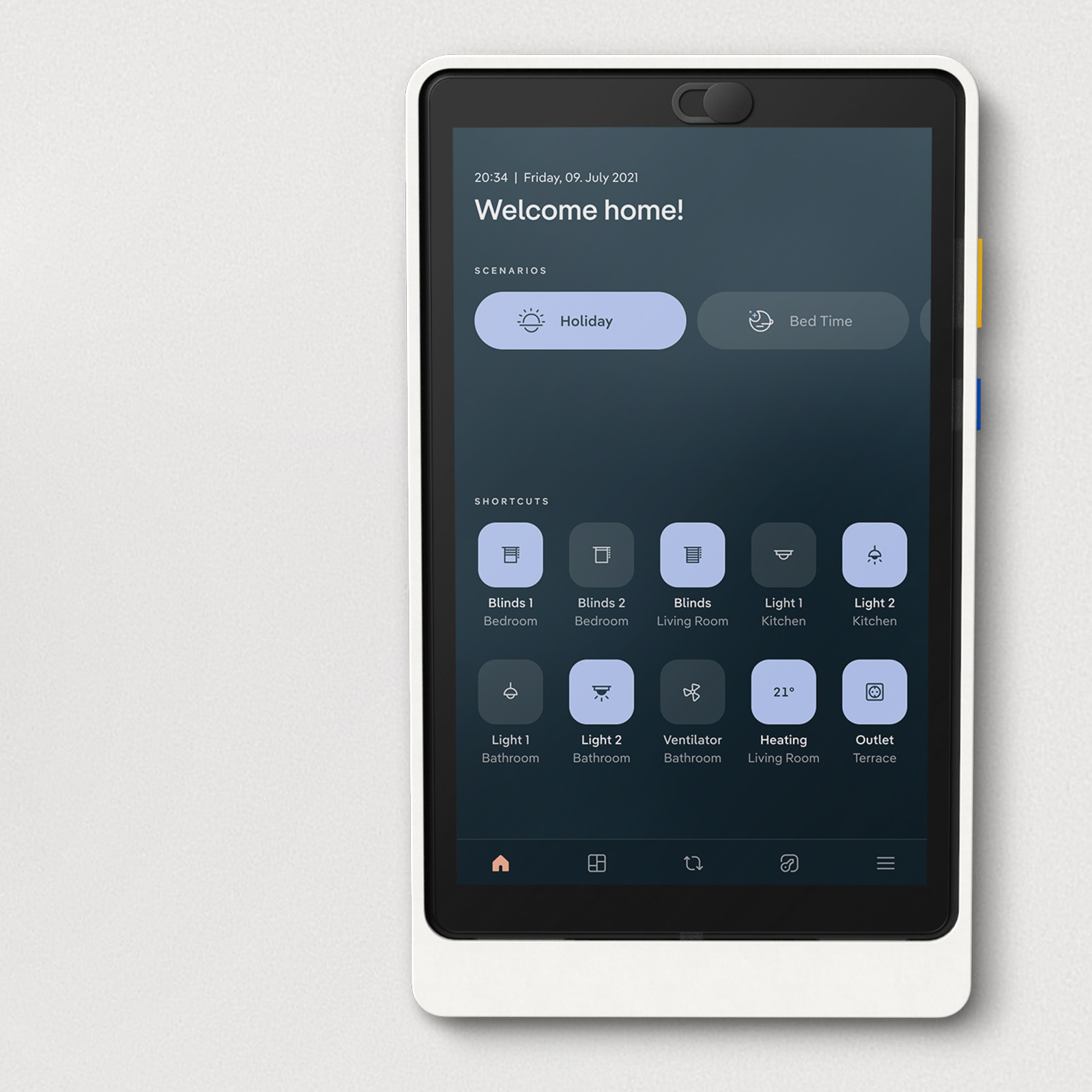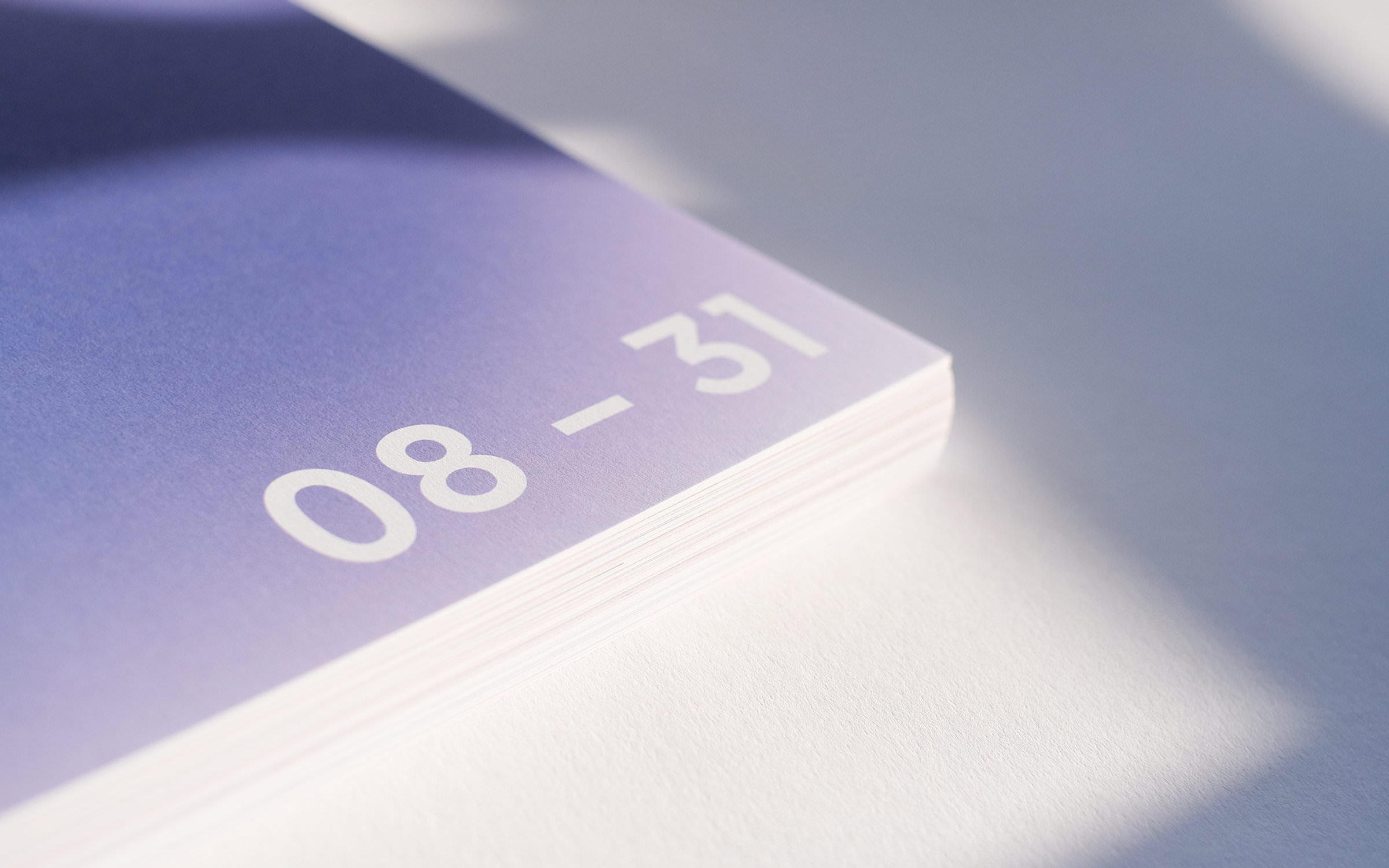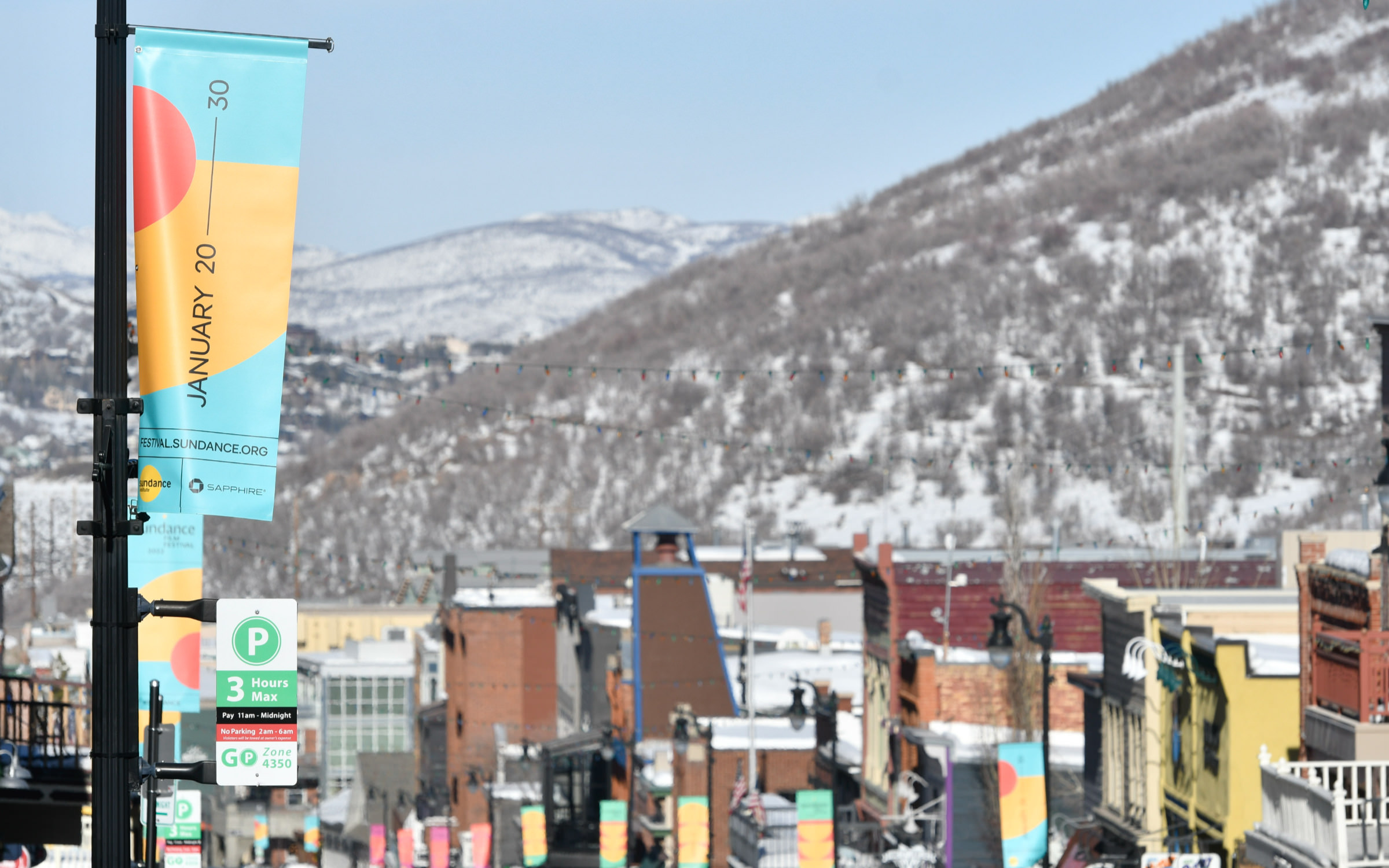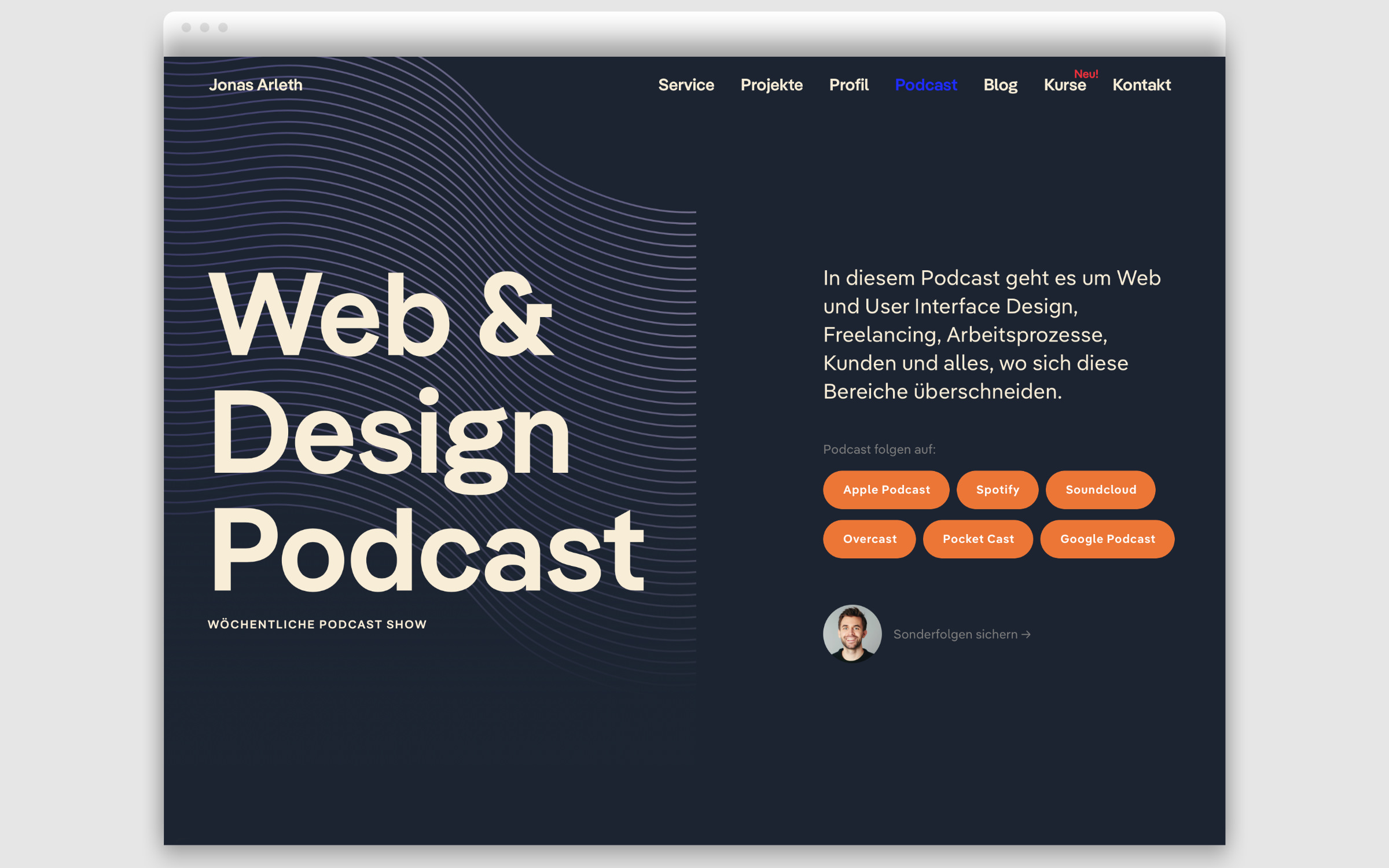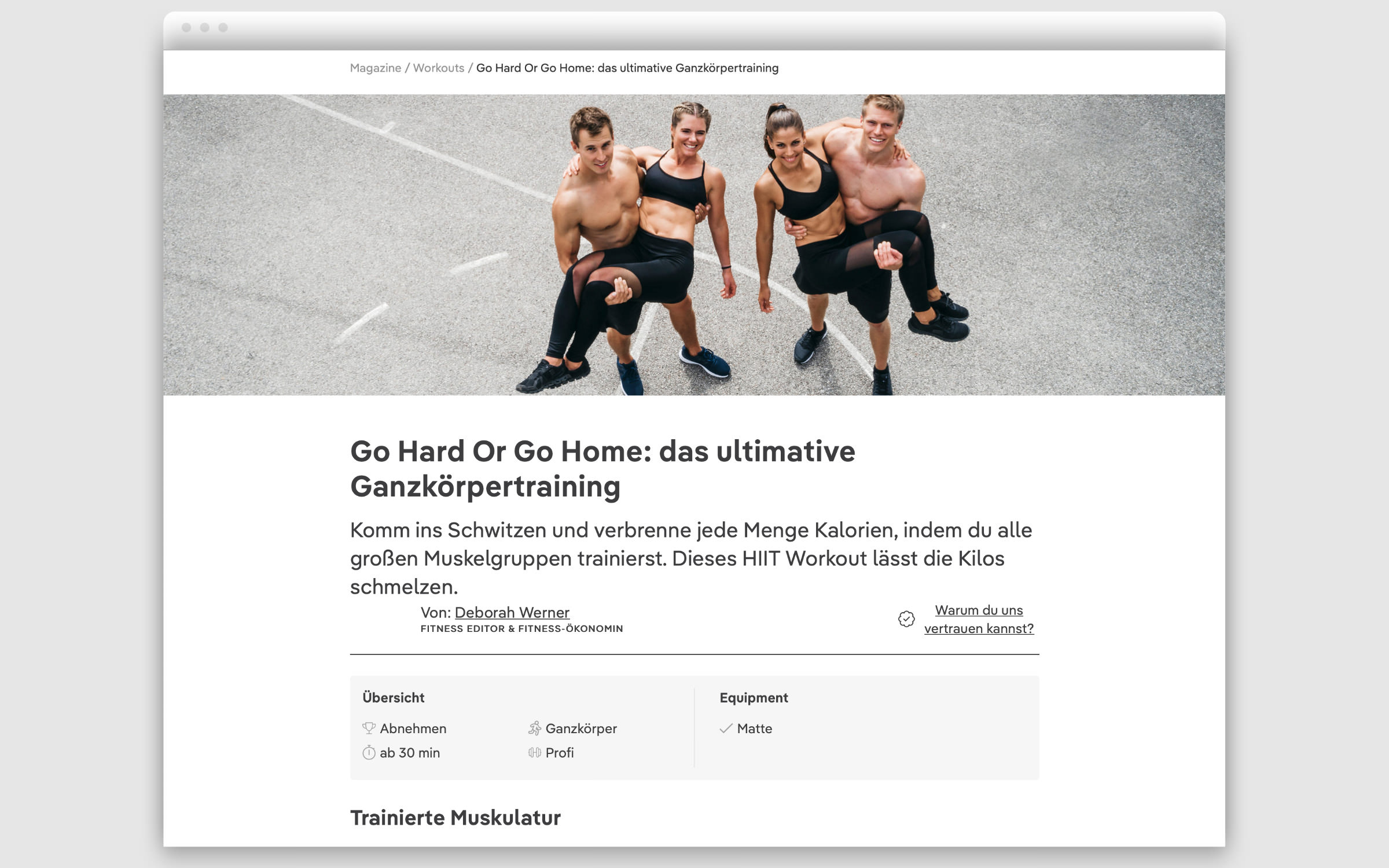







A Berliner by choice, Christoph Koeberlin, is one of the most sought-after font engineers in Europe. Foundries such as FontFont, Swiss Typefaces, TypeBy, Miles Newlyn, TypeMates and Grilli Type and brands such as Ebay, TikTok, ZDF, Volkswagen, the German government, Deutsche Bank, DFB, Porsche, MAN, Twitter, Decathlon, Pinterest, Figma, Telekom and Lufthansa put their trust in him. What’s more, the Fontwerk engineering team would be unimaginable without his instrumental help in the early days. The list would be even more star-studded if it weren’t for numerous non-disclosure agreements.
Yet it is not just his technical know-how that Christoph is renowned for. His creative work is proof of his keen instinct for what makes a stand-out and highly sought-after corporate typeface. In addition to FF Mark, which he designed in partnership with Hannes von Döhren and the FontFont Type Department back in 2013, Christoph is also the designer behind Fabrikat (released by HVD Fonts 2016) and Pangea (published by Fontwerk 2020). All three of these typefaces became bestsellers within a very short space of time. He was also significantly involved in major custom font projects for Mercedes-Benz, Liebherr, Hyundai, Lonely Planet and SFMOMA. This makes him one of the best typeface designers of our time. Yet Christoph remains modest and down-to-earth in an almost Keanu Reeves-esque manner with philanthropic ideas and actions such as the permanent donation of part of his Pangea royalties to help conserve the rainforest. With his latest work, Tausend, together with Gabriel Richter he is writing the next chapter. It too has what it takes to be the next big thing.
At this point, any other CV would already be impressive and full to the brim, yet Christoph has another trick up his sleeve, his passion project sportsfonts.com. Under this umbrella, he designs retail and exclusive fonts for sports clubs and brands such as FSV Mainz 05, FC St. Pauli, Werder Bremen, Schalke 04 and (his) 1. FC Kaiserslautern. Their fans are just as enthusiastic about it as the specialist audience, as documented by awards such as the ADC 2025 Grand Prix Design Award (!), the iF Design Award and German Brand Award.
Christoph Koeberlin is a multi-talented, exceptional designer who can fill many positions – always at a world-class level.
Christoph Koeberlin
Olli Meier
Andreas Frohloff
Igino Marini Spacing/Kerning
Christoph Koeberlin Naming
Ivo Gabrowitsch Copywriting, Specimen
Tobias Peil Motion Design, Imagery
Anja Knust Artwork, Imagery
Fungi Dube Artwork, Imagery (Afrikan)
Azza Alameddine Artwork (Arabic)
Yanek Iontef Artwork (Hebrew)
Olli Meier Artwork (Arabic, Hebrew), Specimen
Nik Stohn Motion Design (Italics)
Lucy Beckley English Translation
2016–2025
Version 1.00: July 20, 2020
Version 1.002 (Version 2.00 for Variable Fonts): March 9, 2021 Italics
Version 1.003: December 20, 2021 African Latin
Version 1.003 (forgot to count on): December 20, 2022 Arabic (Upright), Hebrew
Version 3.00: June 18, 2024 Condensed (except for Arabic and Hebrew); Variable Fonts: optical size axis replaces 4 other axes, web font subsets, minor changes
Version 3.01; May 13, 2025 Farsi (Persian)
Version 3.02; Dec 19, 2025 Thai
Joseph Binder Award 2022 Distinction
Static .otf, .woff2
Variable .ttf, .woff2
Additional formats on request
Trial Free test license
Base Includes Desktop, Web and Social Media use
Extended Larger volume, App or Audio-Visual
Additional licenses on request
Available on request
Included in the Collection package
4 axes: weight, width, italic, optical size extenders, openness of shapes, spacing, ink traps
Web file sizes .woff2: 808 KB all languages, 303 KB Complete Latin, 120 KB Basic European Latin, 179 KB Cyrillic, 154 KB Greek, 75 KB Arabic, 84 KB Hebrew, 57KB Thai
Pangea® is a registered trademark of Fontwerk GmbH
Uppercase
Lowercase
Latin Accents
Numerals & Currency Symbols
Punctuation
Mathematical Signs & Symbols
Arrows & Shapes
Ligatures
Greek
Cyrillic
Arabic
Hebrew
| A | Abaza Abidji Abron Abron Abua Acheron Acheron Achinese Achinese Acholi Achuar-Shiwiar Achuar-Shiwiar Adamawa Fulfulde Adamawa Fulfulde Adangme Adangme Adele Adyghe Afar Afar Afrikaans Afrikaans Aghem Aghem Aghul Agni Aguaruna Aguaruna Ahanta Ahtna Aja (Benin) Aja (Benin) Akebu Akoose Alekano Aleut Algerian Arabic Alonquin Alutiiq Amahuaca Amahuaca Amarakaeri Amarakaeri Amis Amis Anaang Andaandi Andaandi, Dongolawi Angas Anii Anii Anufo Anuta Anuta Ao Naga Apinayé Arabela Arabela Aragonese Aragonese Arbëreshë Albanian Arbëreshë Albanian Archi Asháninka Asháninka Ashéninka Perené Ashéninka Perené Asturian Asturian Asu (Tanzania) Atayal Atayal Avaric Avatime Awa-Cuaiquer Awa-Cuaiquer Awetí Awing Ayizo Gbe |
| B | Baatonum Baatonum Bafia Bafia Bagirmi Fulfulde Bagirmi Fulfulde Baharna Arabic Balante-Ganja Balinese Balinese Balkan Romani Bambara Bambara Banjar Baoulé Baoulé Bari Bari Basa (Cameroon) Basa (Cameroon) Bashkir Basque Basque Bassari Batak Dairi Batak Dairi Batak Karo Batak Karo Batak Mandailing Batak Mandailing Batak Simalungun Batak Simalungun Batak Toba Batak Toba Belarusian Bemba (Zambia) Bemba (Zambia) Bena (Tanzania) Bena (Tanzania) Bezhta Biali Biali Bikol Bikol Bini Bini Bislama Bislama Bissa Boko (Benin) Boko (Benin) Bomu Bora Bora Borana-Arsi-Guji Oromo Borana-Arsi-Guji Oromo Borgu Fulfulde Borgu Fulfulde Bosnian Bouna Kulango Breton Breton Buamu Budukh Buginese Bulgarian Bushi Bushi |
| C | Candoshi-Shapra Candoshi-Shapra Caquinte Caquinte Caribbean Hindustani Caribbean Hindustani Cashibo-Cacataibo Cashibo-Cacataibo Cashinahua Cashinahua Catalan Cebuano Cebuano Central Alaskan Yupik Central Alaskan Yupik Central Atlas Tamazight Central Atlas Tamazight Central Aymara Central Aymara Central Kurdish Central Mazahua Central Mazahua Central Nahuatl Central-Eastern Niger Fulfulde Central-Eastern Niger Fulfulde Cerma Chachi Chachi Chamalal Chamorro Chavacano Chavacano Chayahuita Chayahuita Chechen Chickasaw Chickasaw Chiga Chiga Chiltepec Chinantec Chiltepec Chinantec Chinese Buriat Chokwe Chokwe Chuukese Chuukese Chuvash Cimbrian Cofán Cofán Comox Congo Swahili Cook Islands Māori Cook Islands Māori Cornish Cornish Corsican Corsican Creek Creek Crimean Tatar Crimean Tatar Croatian Czech |
| D | Dagbani Dagbani Danish Dargwa Dari Dehu Dehu Dendi (Benin) Dido Dimli Dinka Dinka Ditammari Dogri (individual language) Dongolawi Duala Duala Dungan Dutch Dyan Dyula Dyula |
| E | Eastern Abnaki Eastern Arrernte Eastern Arrernte Eastern Maninkakan Eastern Maninkakan Eastern Mari Eastern Oromo Eastern Oromo Eastern Yiddish Efik Egyptian Arabic Embu English Erzya Ese Ejja Ewe Ewe Ewondo Ewondo |
| F | Falam Chin Fanti Fanti Farefare Faroese Fe’Fe’ Fijian Fijian Filipino Filipino Finnish Fon Fon Foodo Foodo French Friulian Friulian |
| G | Ga Ga Gagauz Galician Galician Ganda Ganda Garifuna Garifuna Ga’anda Gen Gen German Gheg Albanian Gheg Albanian Gilbertese Gilbertese Gonja Gonja Gooniyandi Gourmanchéma Guadeloupean Creole French Guadeloupean Creole French Guinea Kpelle Guinea Kpelle Gulf Arabic Gusii Gusii Gwichʼin Gwichʼin |
| H | Haitian Haitian Hakha Chin Halh Mongolian Halkomelem Hani Hani Hassaniyya Hausa Hausa Hawaiian Hawaiian Hebrew Hiligaynon Hiligaynon Hopi Hopi Huastec Huastec Hungarian Hän Hän |
| I | Ibibio Ibibio Icelandic Idoma Ifè Igbo Igbo Iloko Iloko Inari Sami Indonesian Indonesian Ingush Inku Iranian Persian Iraqi Arabic Irish Istro Romanian Italian Ixcatlán Mazatec Ixcatlán Mazatec |
| J | Jamaican Creole English Jamaican Creole English Japanese Japanese Javanese Javanese Jenaama Bozo Jola-Fonyi Jola-Fonyi Judeo-Tat |
| K | Kabardian Kabiyè Kabiyè Kabuverdianu Kabuverdianu Kabyle Kabyle Kaingang Kaingang Kako Kako Kala Lagaw Ya Kalaallisut Kalaallisut Kalenjin Kalenjin Kalmyk Kamba (Kenya) Kamba (Kenya) Kanuri Kanuri Kaonde Kaonde Kaqchikel Kaqchikel Kara-Kalpak Karachay-Balkar Karaim Karata Karelian Karelian Kasem Kasem Kashubian Kazakh Kekchí Kekchí Kenzi Kenzi, Mattokki Khasi Khasi Khinalugh Khoekhoe Khoekhoe Kikuyu Kikuyu Kimbundu Kimbundu Kinyarwanda Kinyarwanda Kirghiz Kirmanjki Kituba (DRC) Kituba (DRC) Kom (Cameroon) Komi-Permyak Kongo Kongo Konzo Konzo Koonzime Koyra Chiini Songhay Koyraboro Senni Songhai Koyraboro Senni Songhai Krio Krio Krymchak Kuanyama Kumyk Kusaal Kven Finnish Kwak’wala Kwasio Kölsch K’iche’ K’iche’ |
| L | Ladin Ladino Ladino Lak Lakota Lakota Lama Lamnso’ Lamnso’ Langi Langi Latgalian Latin Lezghian Libyan Arabic Ligurian Lingala Lingala Lithuanian Lobi Lobi Lombard Lombard Low German Lower Sorbian Lozi Lozi Luba-Katanga Luba-Lulua Luba-Lulua Lukpa Lukpa Lule Sami Luo (Kenya and Tanzania) Luo (Kenya and Tanzania) Luxembourgish Lyele Láá Láá Bwamu |
| M | Maasina Fulfulde Maasina Fulfulde Macedo-Romanian Macedonian Madurese Madurese Makhuwa Makhuwa-Meetto Makonde Makonde Makwe Malagasy Malagasy Malaysian Malaysian Malba Birifor Maltese Mam Mam Mamara Senoufo Mandinka Mandjak Mankanya Manx Manx Maore Comorian Maore Comorian Maori Maori Mapudungun Mapudungun Marshallese Marshallese Masai Masai Masana Matsés Matsés Mattokki Mauritian Creole Mauritian Creole Mbelime Medumba Megleno Romanian Mende (Sierra Leone) Mende (Sierra Leone) Meriam Mir Meriam Mir Meru Meru Meta’ Metlatónoc Mixtec Metlatónoc Mixtec Mezquital Otomi Mezquital Otomi Minangkabau Minangkabau Mirandese Mirandese Miyobe Miyobe Mizo Mizo Mi’kmaq Mi’kmaq Moba Modern Greek Mohawk Mohawk Moksha Mongolian Buriat Montagnais Montagnais Montenegrin Montenegrin Moroccan Arabic Mossi Mossi Mundang Mundang Munsee Murrinh-Patha Murrinh-Patha Murui Huitoto Murui Huitoto Muslim Tat Muslim Tat Mwani Mwani Ménik Mískito Mískito |
| N | Naga Pidgin Naga Pidgin Nateni Nateni Navajo Navajo Nawdm Ndonga Ndonga Ndrulo Neapolitan Neapolitan Ngazidja Comorian Ngazidja Comorian Ngiemboon Ngiemboon Ngomba Ngomba Nigerian Fulfulde Nigerian Fulfulde Niuean Niuean Nobiin Nobiin Nogai Nomatsiguenga Nomatsiguenga Noon North Azerbaijani North Azerbaijani North Marquesan North Marquesan North Mesopotamian Arabic North Ndebele North Ndebele Northeastern Dinka Northeastern Dinka Northern Bobo Madaré Northern Dagara Northern Kissi Northern Kissi Northern Kurdish Northern Kurdish Northern Pashto Northern Qiandong Miao Northern Qiandong Miao Northern Sami Northern Uzbek Northern Uzbek Norwegian Nuer Nuer Nuuchahnulth Nyamwezi Nyamwezi Nyanja Nyanja Nyankole Nyankole Nyemba Nyemba Nzima Nzima |
| O | Occitan Occitan Ojitlán Chinantec Ojitlán Chinantec Old Prussian Omaha-Ponca Orma Orma Oroqen Oroqen Ossetian Otuho Otuho |
| P | Palauan Palauan Paluan Pampanga Pampanga Papantla Totonac Papantla Totonac Papiamento Papiamento Paraguayan Guaraní Paraguayan Guaraní Pedi Pedi Phuie Picard Pichis Ashéninka Pichis Ashéninka Piemontese Piemontese Pijin Pijin Pintupi-Luritja Pintupi-Luritja Pipil Pipil Pite Sami Pohnpeian Pohnpeian Polish Pontic Greek Pontic Greek Pontic Greek Portuguese Potawatomi Potawatomi Pulaar Pulaar Pular Pular Purepecha Purepecha Páez Páez |
| Q | Qashqa’i Quechua Quechua |
| R | Romanian Romansh Romansh Rotokas Rotokas Rundi Rundi Russian Russian Buriat Rusyn Rutul Rwa |
| S | Saafi-Saafi Saidi Arabic Samburu Samoan Samoan Sanaani Arabic Sango Sango Sangu (Tanzania) Sangu (Tanzania) Saramaccan Saramaccan Sardinian Sardinian Saxwe Gbe Scots Scots Scottish Gaelic Scottish Gaelic Secoya Secoya Sena Sena Serbian Serbian Serer Serer Seri Seri Seselwa Creole French Seselwa Creole French Shambala Sharanahua Sharanahua Shawnee Shawnee Shilluk Shilluk Shipibo-Conibo Shipibo-Conibo Shona Shona Shor Shuar Shuar Shughni Sicilian Sicilian Silesian Siona Siona Sissala Skolt Sami Slovak Slovenian Soga Soga Somali Somali Soninke Soninke South Azerbaijani South Marquesan South Marquesan South Ndebele South Ndebele Southern Altai Southern Aymara Southern Aymara Southern Bobo Madaré Southern Dagaare Southern Dagaare Southern Nuni Southern Qiandong Miao Southern Qiandong Miao Southern Sami Southern Samo Southern Sotho Southern Sotho Spanish Squamish Sranan Tongo Sranan Tongo Standard Arabic Standard Estonian Standard Estonian Standard Latvian Standard Malay Standard Malay Sukuma Sukuma Sundanese Sundanese Susu Susu Swahili Swahili Swati Swedish Swiss German Syenara Senoufo |
| T | Tabassaran Tachelhit Tachelhit Tagalog Tagalog Tahitian Tahitian Taita Tajik Talysh Talysh Tasawaq Tatar Tawallammat Tamajaq Ta’izzi-Adeni Arabic Tedim Chin Tedim Chin Tem Tem Teso Teso Tetum Tetum Tetun Dili Tetun Dili Thompson Ticuna Ticuna Tigon Mbembe Tikar Timne Timne Tiv Tiéyaxo Bozo Tlingit Toba Toba Tojolabal Tojolabal Tok Pisin Tok Pisin Tokelau Tokelau Toma Tonga (Tonga Islands) Tonga (Tonga Islands) Tonga (Zambia) Tonga (Zambia) Tosk Albanian Tosk Albanian Totontepec Mixe Tsafiki Tsafiki Tsakhur Tsakhur Tsonga Tswana Tumbuka Tumbuka Tunisian Arabic Turka Turkish Turkmen Tuvalu Tuvalu Tuvinian Twi Twi Tzeltal Tzeltal Tzotzil Tzotzil |
| U | Uab Meto Uab Meto Udi Udmurt Ukrainian Umbundu Umbundu Ume Sami Upper Guinea Crioulo Upper Guinea Crioulo Upper Sorbian Urarina Urarina Urdu Urum |
| V | Venda Venda Venetian Venetian Veps Veps Vietnamese Vlax Romani Võro Võro |
| W | Waama Waci Gbe Waci Gbe Wallisian Wallisian Walloon Walser Walser Wamey Wangaaybuwan-Ngiyambaa Waorani Waray (Philippines) Waray (Philippines) Warlpiri Warlpiri Wasa Wasa Wayuu Wayuu Welsh West Central Oromo West Central Oromo West-Central Limba West-Central Limba Western Abnaki Western Abnaki Western Frisian Western Frisian Western Mari Western Niger Fulfulde Western Niger Fulfulde Western Yiddish Wik-Mungkan Winyé Wiradjuri Wiradjuri Wolof Wolof |
| X | Xavánte Xhosa Xhosa Xwela Gbe Xwela Gbe |
| Y | Yagnobi Yagua Yagua Yanesha’ Yanesha’ Yangben Yanomamö Yao Yao Yapese Yindjibarndi Yom Yom Yoruba Yoruba Yucateco Yucateco |
| Z | Zapotec Zapotec Zarma Zarma Zulu Zulu Zuni Zuni Záparo Záparo |
| A | Abidji Abron Abua Acheron Achinese Acholi Achuar-Shiwiar Adamawa Fulfulde Adangme Adele Afar Afrikaans Aghem Agni Aguaruna Ahanta Ahtna Aja (Benin) Akebu Akoose Alekano Aleut Alonquin Alutiiq Amahuaca Amarakaeri Amis Anaang Andaandi, Dongolawi Angas Anii Anufo Anuta Arabela Aragonese Arbëreshë Albanian Asháninka Ashéninka Perené Asturian Atayal Avatime Awa-Cuaiquer Awing Ayizo Gbe |
| B | Baatonum Bafia Bagirmi Fulfulde Balante-Ganja Balinese Balkan Romani Bambara Banjar Baoulé Bari Basa (Cameroon) Basque Bassari Batak Dairi Batak Karo Batak Mandailing Batak Simalungun Batak Toba Bemba (Zambia) Bena (Tanzania) Biali Bikol Bini Bislama Bissa Boko (Benin) Bomu Bora Borana-Arsi-Guji Oromo Borgu Fulfulde Bosnian Breton Buamu Buginese Bushi |
| C | Candoshi-Shapra Caquinte Caribbean Hindustani Cashibo-Cacataibo Cashinahua Catalan Cebuano Central Alaskan Yupik Central Atlas Tamazight Central Aymara Central Kurdish Central Mazahua Central Nahuatl Central-Eastern Niger Fulfulde Cerma Chachi Chamorro Chavacano Chayahuita Chickasaw Chiga Chiltepec Chinantec Chokwe Chuukese Cimbrian Cofán Comox Cook Islands Māori Cornish Corsican Creek Crimean Tatar Croatian Czech |
| D | Dagbani Danish Dehu Dimli Dinka Duala Dutch Dyan Dyula |
| E | Eastern Arrernte Eastern Maninkakan Eastern Oromo Efik English Ewe Ewondo |
| F | Fanti Farefare Faroese Fe’Fe’ Fijian Filipino Finnish Fon Foodo French Friulian |
| G | Ga Gagauz Galician Ganda Garifuna Gen German Gheg Albanian Gilbertese Gonja Gooniyandi Gourmanchéma Guadeloupean Creole French Guinea Kpelle Gusii Gwichʼin |
| H | Haitian Halkomelem Hani Hassaniyya Hausa Hawaiian Hiligaynon Hopi Huastec Hungarian Hän |
| I | Ibibio Icelandic Idoma Ifè Igbo Iloko Inari Sami Indonesian Irish Istro Romanian Italian Ixcatlán Mazatec |
| J | Jamaican Creole English Japanese Javanese Jenaama Bozo Jola-Fonyi |
| K | Kabiyè Kabuverdianu Kabyle Kaingang Kako Kala Lagaw Ya Kalaallisut Kalenjin Kamba (Kenya) Kanuri Kaonde Kaqchikel Kara-Kalpak Karelian Kasem Kashubian Kekchí Kenzi, Mattokki Khasi Khoekhoe Kikuyu Kimbundu Kinyarwanda Kirmanjki Kituba (DRC) Kom (Cameroon) Kongo Konzo Koonzime Koyraboro Senni Songhai Krio Kusaal Kven Finnish Kwak’wala Kölsch K’iche’ |
| L | Ladin Ladino Lakota Lama Lamnso’ Langi Latgalian Lingala Lithuanian Lobi Lombard Low German Lower Sorbian Lozi Luba-Lulua Lukpa Lule Sami Luo (Kenya and Tanzania) Luxembourgish Lyele Láá Láá Bwamu |
| M | Maasina Fulfulde Macedo-Romanian Madurese Makonde Malagasy Malaysian Malba Birifor Maltese Mam Mamara Senoufo Mandinka Mandjak Mankanya Manx Maore Comorian Maori Mapudungun Marshallese Masai Masana Matsés Mauritian Creole Medumba Megleno Romanian Mende (Sierra Leone) Meriam Mir Meru Metlatónoc Mixtec Mezquital Otomi Minangkabau Mirandese Miyobe Mizo Mi’kmaq Mohawk Montagnais Montenegrin Mossi Mundang Munsee Murrinh-Patha Murui Huitoto Muslim Tat Mwani Ménik Mískito |
| N | Naga Pidgin Nateni Navajo Nawdm Ndonga Ndrulo Neapolitan Ngazidja Comorian Ngiemboon Ngomba Nigerian Fulfulde Niuean Nobiin Nomatsiguenga Noon North Azerbaijani North Marquesan North Ndebele Northeastern Dinka Northern Bobo Madaré Northern Dagara Northern Kissi Northern Kurdish Northern Qiandong Miao Northern Sami Northern Uzbek Norwegian Nuer Nuuchahnulth Nyamwezi Nyanja Nyankole Nyemba Nzima |
| O | Occitan Ojitlán Chinantec Old Prussian Omaha-Ponca Orma Oroqen Otuho |
| P | Palauan Pampanga Papantla Totonac Papiamento Paraguayan Guaraní Pedi Phuie Picard Pichis Ashéninka Piemontese Pijin Pintupi-Luritja Pipil Pite Sami Pohnpeian Polish Pontic Greek Portuguese Potawatomi Pulaar Pular Purepecha Páez |
| Q | Quechua |
| R | Romanian Romansh Rotokas Rundi |
| S | Saafi-Saafi Samoan Sango Sangu (Tanzania) Saramaccan Sardinian Saxwe Gbe Scots Scottish Gaelic Secoya Sena Serbian Serer Seri Seselwa Creole French Sharanahua Shawnee Shilluk Shipibo-Conibo Shona Shuar Sicilian Silesian Siona Sissala Skolt Sami Slovak Slovenian Soga Somali Soninke South Azerbaijani South Marquesan South Ndebele Southern Aymara Southern Bobo Madaré Southern Dagaare Southern Nuni Southern Qiandong Miao Southern Sami Southern Samo Southern Sotho Spanish Squamish Sranan Tongo Standard Estonian Standard Latvian Standard Malay Sukuma Sundanese Susu Swahili Swedish Swiss German Syenara Senoufo |
| T | Tachelhit Tagalog Tahitian Talysh Tawallammat Tamajaq Tedim Chin Tem Teso Tetum Tetun Dili Thompson Ticuna Tigon Mbembe Tikar Timne Tiéyaxo Bozo Tlingit Toba Tojolabal Tok Pisin Tokelau Toma Tonga (Tonga Islands) Tonga (Zambia) Tosk Albanian Tsafiki Tsakhur Tumbuka Turka Turkish Turkmen Tuvalu Twi Tzeltal Tzotzil |
| U | Uab Meto Umbundu Ume Sami Upper Guinea Crioulo Upper Sorbian Urarina |
| V | Venda Venetian Veps Vietnamese Vlax Romani Võro |
| W | Waci Gbe Wallisian Walloon Walser Wamey Waray (Philippines) Warlpiri Wasa Wayuu Welsh West Central Oromo West-Central Limba Western Abnaki Western Frisian Western Niger Fulfulde Winyé Wiradjuri Wolof |
| X | Xhosa Xwela Gbe |
| Y | Yagua Yanesha’ Yao Yom Yoruba Yucateco |
| Z | Zapotec Zarma Zulu Zuni Záparo |
| M | Modern Greek |
| P | Pontic Greek |
| A | Abaza Adyghe Aghul Archi Avaric |
| B | Bashkir Belarusian Bezhta Budukh Bulgarian |
| C | Chamalal Chechen Chinese Buriat Chuvash Crimean Tatar |
| D | Dargwa Dido Dungan |
| E | Eastern Mari Erzya |
| H | Halh Mongolian |
| I | Ingush |
| J | Judeo-Tat |
| K | Kabardian Kalmyk Karachay-Balkar Karaim Karata Kazakh Khinalugh Kirghiz Komi-Permyak Krymchak Kumyk |
| L | Lak Lezghian |
| M | Macedonian Moksha Mongolian Buriat Montenegrin Muslim Tat |
| N | Nogai North Azerbaijani Northern Kurdish |
| O | Ossetian |
| P | Pontic Greek |
| R | Russian Russian Buriat Rusyn Rutul |
| S | Serbian Shor Shughni Southern Altai |
| T | Tabassaran Tajik Tatar Tsakhur Tuvinian |
| U | Udi Udmurt Ukrainian Urum |
| W | Western Mari |
| Y | Yagnobi |
| A | Abron Acheron Achinese Achuar-Shiwiar Adamawa Fulfulde Adangme Afar Afrikaans Aghem Aguaruna Aja (Benin) Amahuaca Amarakaeri Amis Andaandi Anii Anuta Ao Naga Apinayé Arabela Aragonese Arbëreshë Albanian Asháninka Ashéninka Perené Asturian Asu (Tanzania) Atayal Awa-Cuaiquer Awetí |
| B | Baatonum Bafia Bagirmi Fulfulde Balinese Bambara Baoulé Bari Basa (Cameroon) Basque Batak Dairi Batak Karo Batak Mandailing Batak Simalungun Batak Toba Bemba (Zambia) Bena (Tanzania) Biali Bikol Bini Bislama Boko (Benin) Bora Borana-Arsi-Guji Oromo Borgu Fulfulde Bouna Kulango Breton Bushi |
| C | Candoshi-Shapra Caquinte Caribbean Hindustani Cashibo-Cacataibo Cashinahua Cebuano Central Alaskan Yupik Central Atlas Tamazight Central Aymara Central Mazahua Central-Eastern Niger Fulfulde Chachi Chavacano Chayahuita Chickasaw Chiga Chiltepec Chinantec Chokwe Chuukese Cofán Congo Swahili Cook Islands Māori Cornish Corsican Creek |
| D | Dagbani Dehu Dendi (Benin) Dinka Ditammari Dongolawi Duala Dyula |
| E | Eastern Abnaki Eastern Arrernte Eastern Maninkakan Eastern Oromo Embu Ese Ejja Ewe Ewondo |
| F | Falam Chin Fanti Fijian Filipino Fon Foodo Friulian |
| G | Ga Galician Ganda Garifuna Ga’anda Gen Gheg Albanian Gilbertese Gonja Guadeloupean Creole French Guinea Kpelle Gusii Gwichʼin |
| H | Haitian Hakha Chin Hani Hausa Hawaiian Hiligaynon Hopi Huastec Hän |
| I | Ibibio Igbo Iloko Indonesian Ixcatlán Mazatec |
| J | Jamaican Creole English Japanese Javanese Jola-Fonyi |
| K | Kabiyè Kabuverdianu Kabyle Kaingang Kako Kalaallisut Kalenjin Kamba (Kenya) Kanuri Kaonde Kaqchikel Karelian Kasem Kekchí Kenzi Khasi Khoekhoe Kikuyu Kimbundu Kinyarwanda Kituba (DRC) Kongo Konzo Koyra Chiini Songhay Koyraboro Senni Songhai Krio Kuanyama Kwasio K’iche’ |
| L | Ladino Lakota Lamnso’ Langi Latin Ligurian Lingala Lobi Lombard Lozi Luba-Katanga Luba-Lulua Lukpa Luo (Kenya and Tanzania) |
| M | Maasina Fulfulde Madurese Makhuwa Makhuwa-Meetto Makonde Makwe Malagasy Malaysian Mam Manx Maore Comorian Maori Mapudungun Marshallese Masai Matsés Mattokki Mauritian Creole Mbelime Mende (Sierra Leone) Meriam Mir Meru Meta’ Metlatónoc Mixtec Mezquital Otomi Minangkabau Mirandese Miyobe Mizo Mi’kmaq Moba Mohawk Montagnais Mossi Mundang Murrinh-Patha Murui Huitoto Mwani Mískito |
| N | Naga Pidgin Nateni Navajo Ndonga Neapolitan Ngazidja Comorian Ngiemboon Ngomba Nigerian Fulfulde Niuean Nobiin Nomatsiguenga North Marquesan North Ndebele Northeastern Dinka Northern Kissi Northern Qiandong Miao Northern Uzbek Nuer Nyamwezi Nyanja Nyankole Nyemba Nzima |
| O | Occitan Ojitlán Chinantec Orma Oroqen Otuho |
| P | Palauan Paluan Pampanga Papantla Totonac Papiamento Paraguayan Guaraní Pedi Pichis Ashéninka Piemontese Pijin Pintupi-Luritja Pipil Pohnpeian Potawatomi Pulaar Pular Purepecha Páez |
| Q | Quechua |
| R | Romansh Rotokas Rundi Rwa |
| S | Samburu Samoan Sango Sangu (Tanzania) Saramaccan Sardinian Scots Scottish Gaelic Secoya Sena Serer Seri Seselwa Creole French Shambala Sharanahua Shawnee Shilluk Shipibo-Conibo Shona Shuar Sicilian Siona Soga Somali Soninke South Marquesan South Ndebele Southern Aymara Southern Dagaare Southern Qiandong Miao Southern Sotho Sranan Tongo Standard Estonian Standard Malay Sukuma Sundanese Susu Swahili Swati |
| T | Tachelhit Tagalog Tahitian Taita Tasawaq Tedim Chin Tem Teso Tetum Tetun Dili Ticuna Timne Tiv Toba Tojolabal Tok Pisin Tokelau Tonga (Tonga Islands) Tonga (Zambia) Tosk Albanian Totontepec Mixe Tsafiki Tsonga Tswana Tumbuka Tuvalu Twi Tzeltal Tzotzil |
| U | Uab Meto Umbundu Upper Guinea Crioulo Urarina |
| V | Venda Venetian Veps Võro |
| W | Waama Waci Gbe Wallisian Walser Wangaaybuwan-Ngiyambaa Waorani Waray (Philippines) Warlpiri Wasa Wayuu West Central Oromo West-Central Limba Western Abnaki Western Frisian Western Niger Fulfulde Wik-Mungkan Wiradjuri Wolof |
| X | Xavánte Xhosa Xwela Gbe |
| Y | Yagua Yanesha’ Yangben Yanomamö Yao Yapese Yindjibarndi Yom Yoruba Yucateco |
| Z | Zapotec Zarma Zulu Zuni Záparo |
| E | Eastern Yiddish |
| H | Hebrew |
| W | Western Yiddish |
| A | Algerian Arabic |
| B | Baharna Arabic |
| D | Dari Dogri (individual language) |
| E | Egyptian Arabic |
| G | Gulf Arabic |
| I | Inku Iranian Persian Iraqi Arabic |
| L | Libyan Arabic |
| M | Moroccan Arabic |
| N | North Mesopotamian Arabic Northern Pashto |
| Q | Qashqa’i |
| S | Saidi Arabic Sanaani Arabic Standard Arabic |
| T | Talysh Ta’izzi-Adeni Arabic Tunisian Arabic |
| U | Urdu |


